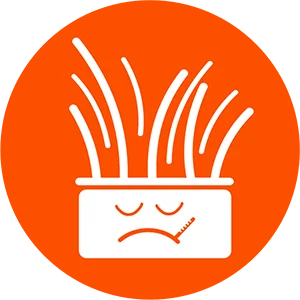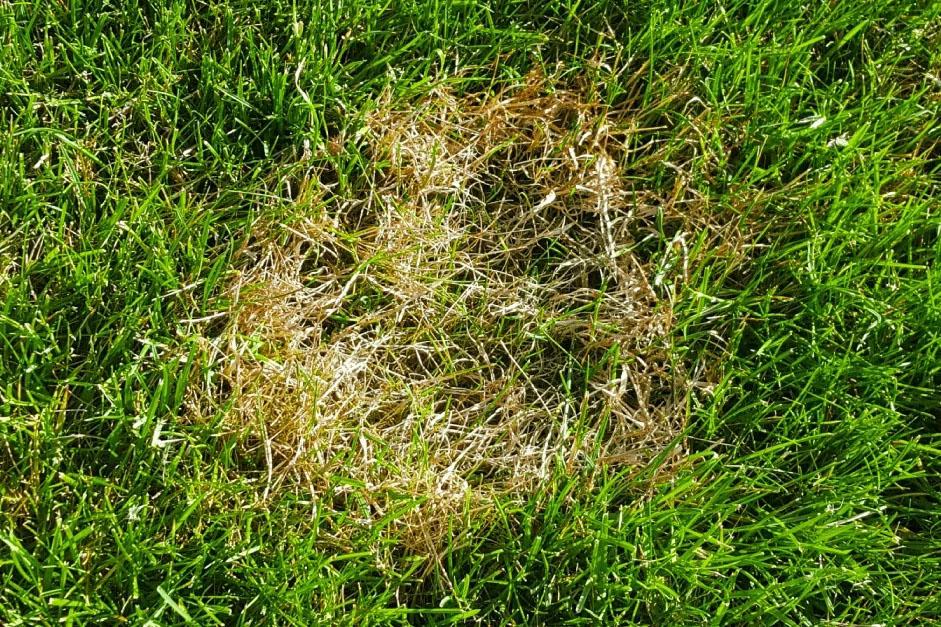Serving Athens, Florence & Muscle Shoals, FL With Fungicide for Lawns
Effective Disease Control for Your Residential Lawn
If you have a discolored lawn covered in circular patches or brown spots, your issue may be a fungal disease growing on it. Fungal growth makes up most diseases affecting grass, so your problem is more common than you might realize. These growth types can spread very quickly and affect large sections of your yard. Industry experts know that fungicide is the best form of lawn disease control to resolve this growth type. Lawn Pride of Athens, Florence and Muscle Shoals proudly performs fungicide treatments on lawns that can effectively fight against and eradicate any fungal disease impacting your yard. Reach out to us for more information about our lawn fungicide treatment options for Athens, Florence, and Muscle Shoals, AL properties.
Fungicide Treatments for Every Lawn Fungus Type
When a fungal disease invades your lawn and takes it over, quick response and treatment are essential. Lawn Pride of Athens, Florence and Muscle Shoals’ lawn care team has specialized training and expertise to diagnose the fungus type on your grass and address it with the most effective fungicide for your lawn type. The most successful lawn fungus control happens when you can conclusively identify the disease attacking and taking over your yard. We’ve listed several of the most common fungal diseases that can grow on your grass:
- Leaf spot disease
- Red thread lawn disease
- Brown patch lawn fungus
- Gray leaf spot disease
- Dollar spot lawn disease
- Zoysia patch fungus
- Pythium lawn fungus
- Brown patch lawn disease
- Yellow patch lawn disease
- Zoysia patch lawn disease
- Summer patch lawn disease
- Take-all patch lawn disease
- Dollar spot lawn disease
- Snow mold lawn disease
- Slime mold lawn disease
- Leaf spot lawn disease
- Pythium lawn blight
- Red thread lawn disease
- Fairly ring lawn disease
- Necrotic ring spot lawn disease
- Powdery mildew lawn disease
- Rust lawn disease
- Fusarium patch lawn disease
- Stripped smut lawn disease
- Crown rot anthracnose

Regular Care for Recurring Lawn Fungus
The disease tends to return to the same lawns year after year without significant changes in cultural practices and the introduction of disease-resistant grass types. As such, our technicians may recommend you add the fungicide program to your regular program to ensure we are able to take a more proactive instead of reactive approach to limiting disease activity in your lawn.
How Fungal Diseases Develop on Lawns
As the general, time-tested saying goes, understanding is half the battle. If a fungal disease has started spreading across your lawn or has taken over, it is useful to understand how fungus develops and invades your grass. Fungus on grass requires three main conditions to take hold and flourish. You’ll find fungal spores in every lawn, but they only grow into a problem when the following three circumstances align, which professionals often call the disease triangle. The following are the three elements of the disease triangle:
Presence of Pathogens
Just like any general fungal disease, a particular fungi’s spores must be present in an environment to start an infection.
Susceptible Host
Even if a fungus is present, it won’t take root in your grass unless the grass type on your property is susceptible to that specific fungus type.
Environmental Conditions
Each fungus requires certain conditions that are favorable to fungal growth. If your property or climate’s conditions aren’t right, the present pathogens won’t infect a susceptible host.

Lawn Fungicide Treatment Questions & Answers
Fungal diseases are known to be stressful and confusing. Fortunately, Lawn Pride of Athens, Florence, and Muscle Shoals will gladly help you fight your battle against disease and fungus on your lawn. Our seasoned, knowledgeable team can help you by diagnosing the fungus growing on your grass and working with you to develop an effective plan to fight it, which typically includes fungicide treatments. For your benefit, we’ve answered a few of our customers’ most common questions about fungicide treatments below.
What Can I Do to Prevent Fungal Lawn Diseases?
Fungicides are best applied pre-emptively before the disease has begun to infect the grass plant. Curatively, fungicides are used to slow down the disease from spreading. This allows for cultural control actions, irrigation, and weather to change favorably to eliminate the environment that favors disease development and activity. Lawn Pride of Athens, Florence, and Muscle Shoals has listed some useful tips to help you prevent grass fungus:
- It is important to include disease-resistant cultivars of grass in your lawn. While not all cultivars are resistant to all diseases, mixing multiple types, will limit the damage a disease will cause in your lawn
- When mowing, never cut off more than one-third of the grass length during each trim
- Mow frequently, and cut your grass to approximately 3.5 inches
- Water your lawn during the early morning hours to give it time to dry during the day
- Monitor your lawn to ensure it gets no more than 1-1.5 inches of water per week
- Aerate your lawn two times per season to break up the thatch and to allow for proper air circulation in the root zone
- If the disease has been identified in your lawn, we recommend you bag your lawn for two to three weeks to remove infected grass blades. This will allow your lawn to recover quicker without re-infection. It is important that you dispose of yard waste according to your local ordinances
- Sometimes, taking a leaf rake and raking the diseased area will help to open the grass blades and allow the infected area to dry out. Remove excessive grass that may result and dispose of it properly
When Should I Invest in Fungicide Treatments?
The most effective time for a fungicide application on your grass is when you notice the first sign that a disease has started developing. The most successful lawn fungicide treatments are preventative measures, but these treatments can also combat large-scale infections professionals apply them. Your treatment schedule will vary according to your type of grass, location, and fungal disease type. However, lawn care professionals commonly apply fungicides monthly, starting in early spring and continuing until late fall.
What Is Brown Patch Fungus?
Brown patch fungus is very common in grass and is caused by Rhizoctonia solani spores. Once this infection starts, it spreads very quickly and causes brown grass in circular areas surrounded by narrow, dark rings. It is vital to treat brown patch fungus as early as possible to get the best results. Lawn Pride of Athens, Florence, and Muscle Shoals is ready to step in and resolve this disease if you notice brown patch fungus invading your lawn.
Request a Free Estimate for Fungicide Treatment Today
With many years of hands-on experience helping homeowners protect their lawns and keep them looking healthy and beautiful, Lawn Pride of Athens, Florence, and Muscle Shoals is your go-to local expert in lawn care services. We take the guesswork out of lawn care and provide successful treatments. Furthermore, you can count on us for a free estimate for fungicide treatment whenever your lawn shows signs of fungal growth. Request a free lawn fungicide treatment estimate today to get started.



